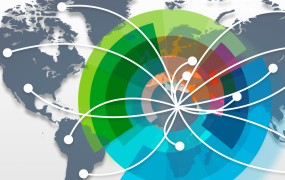Artificial intelligence or AI is no longer the stuff of sci-fi magazines and movies. Today one can avail a variety of AI based technologies in their daily lives, starting from smart homes to smart cars. The advantages of AI developments are additionally not limited to making life more convenient for the consumers. In fact, AI is also helping in removing accessibility barriers. Web accessibility is important to make sure that people with disabilities experience the World Wide Web in the same way that everyone else does. Companies like AccessiBe additionally help in developing AI-powered web accessibility solutions that makes websites accessible to people with disabilities, and compliant with the WCAG, ADA, and other accessibility legislation.
AI-powered technologies go a long way in removing barriers that tend to limit the accessibility of the digital world for people with disabilities. There are a variety of AI powered solutions available today that aid people with disabilities to engage with web content in many ways. Here are a few examples:
- AI aids people who have low literacy skills or cognitive impairments to understand content better by providing a textual summary
- AI based technologies are available that help users with limited dexterity to dictate a Google search.
- AI powered online translators allow deaf users to engage with audio content by generating closed captions and translations.
- Captioning tools are present in major social media platforms today that help visually impaired users.
The simplest way to ensure compliance is to design and develop a digital product by taking into consideration the ADA web accessibility standards. For a few people, their online product or website, has already been building and ensuring its accessibility takes time. Checking out requirements manually makes the process too time consuming. This is where AI comes as a huge help. Not only does AI supports disabled individuals, but it can also aid non-disabled users in the process of discovering certain accessibilities issues that may need resolving. For instance, the usage of screen readers and similar assistive technologies go a long way in usability testing and provide an experience that is more similar to what disabled users tend to experience during the interaction with an online product. It also aids in uncovering potential challenges that need correction. But this does not eliminate the need for manual testing entirely. Human element is often needed to provide insights on varying design aspects like color contrasts and fonts. It also delivers real user and less expensive feedback. Human testers will also provide feedback in regards to user-friendliness and customer experience.
With the usage of artificial intelligence and automation, AccessiBe aims at considerably reducing cost and time, making web accessibility achievable for all types of businesses. They make use of two applications that together achieve compliance: the interface and AI-powered processes. The interface additionally is a session-based design and UI adjustment tool that makes accessibility modifications on the basis of the individual needs of the users.



